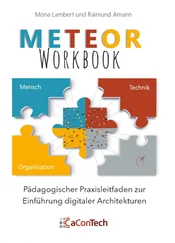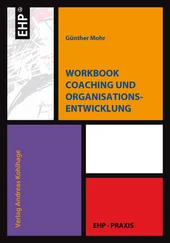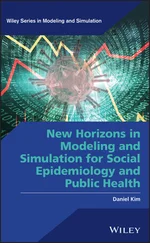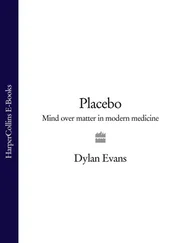Emergency Medicine Simulation Workbook
Здесь есть возможность читать онлайн «Emergency Medicine Simulation Workbook» — ознакомительный отрывок электронной книги совершенно бесплатно, а после прочтения отрывка купить полную версию. В некоторых случаях можно слушать аудио, скачать через торрент в формате fb2 и присутствует краткое содержание. Жанр: unrecognised, на английском языке. Описание произведения, (предисловие) а так же отзывы посетителей доступны на портале библиотеки ЛибКат.
- Название:Emergency Medicine Simulation Workbook
- Автор:
- Жанр:
- Год:неизвестен
- ISBN:нет данных
- Рейтинг книги:3 / 5. Голосов: 1
-
Избранное:Добавить в избранное
- Отзывы:
-
Ваша оценка:
- 60
- 1
- 2
- 3
- 4
- 5
Emergency Medicine Simulation Workbook: краткое содержание, описание и аннотация
Предлагаем к чтению аннотацию, описание, краткое содержание или предисловие (зависит от того, что написал сам автор книги «Emergency Medicine Simulation Workbook»). Если вы не нашли необходимую информацию о книге — напишите в комментариях, мы постараемся отыскать её.
Emergency Medicine Simulation Workbook
Emergency Medicine Simulation Workbook — читать онлайн ознакомительный отрывок
Ниже представлен текст книги, разбитый по страницам. Система сохранения места последней прочитанной страницы, позволяет с удобством читать онлайн бесплатно книгу «Emergency Medicine Simulation Workbook», без необходимости каждый раз заново искать на чём Вы остановились. Поставьте закладку, и сможете в любой момент перейти на страницу, на которой закончили чтение.
Интервал:
Закладка:
About the Companion Website
This book is accompanied by a companion website.
www.wiley.com/go/thoureen/simulation/workbook2e 
This website includes:
Video clips
Imaging and laboratory results – presented in Powerpoint format for easy download
Introduction
Simulation has become increasingly prevalent in healthcare education, and particularly in emergency medicine education, over the past few decades [1]. It is a way to provide a safe environment for the application of knowledge and is therefore useful for undergraduate and graduate medical education, as well as for continuing professional development for physicians. Nurses and allied health professionals also use simulation‐based learning as an educational tool [2].
Simulation‐based learning has been shown to have positive effects on the growth of complex skills across many domains of higher education [3]. Competencies that are frequently taught with simulation include procedural skill acquisition, patient safety, communication, and interprofessional team training [2]. One meta‐analysis found that simulations with high authenticity have greater effects than simulations with low authenticity [3]. It is therefore important to design realistic simulations with appropriate competency acquisition in mind.
The goal of this workbook is to help educators perform realistic simulation experiences with practical learning objectives for students, junior and postgraduate learners. The workbook was designed with the basic clinical competencies of emergency medicine physician trainees in mind, but the cases throughout may be incorporated into a curriculum for nurses, physician assistants, or paramedics. The chapters incorporate topics listed by the American Board of Emergency Medicine as included in the certification examination. Each chapter includes three individual simulation cases that highlight subject material pertinent to the chapter topic. Changes for the second edition of this book include almost entirely new case content, the addition of one pediatric case per chapter, and, when applicable, alternative options to make cases adaptable for prehospital provider education.
For ease of use, the presentation format for each individual simulation case is uniform. Each case starts with specific educational objectives and suggested critical actions. For those working within the United States postgraduate training system, the relevant Accreditation Council of Graduate Medical Education (ACGME) clinical competencies are included. These are (together with the abbreviations used in the chapters) medical knowledge, patient care (PC), systems‐based practice (SBP), professionalism (P), interpersonal and communication skills (ICS), practice‐based learning and improvement (PBL).
Following the critical actions, you will find an outline for the case set‐up. This includes a description of the physical environment, mannequin, props, distractors, and actors recommended for each simulation. An online resource is provided, which includes imaging and laboratory studies pertinent to each case. These multimedia images can be shown in real time on computer screens/monitors during the simulation session.
Next, you will find a brief narrative of the case. There is a description of the initial mannequin conditions and a case narrative, which details the changes in condition that occur after a specific time interval or in response to learner actions. Accompanying flow diagrams also outline the general sequence of actions for each case. In many of the cases, alternative options are described for use with varying levels of learners (e.g. a simple scenario for junior learners with a more difficult scenario for advanced learners).
At the end of each case you will find information to aid in debriefing. Instructor notes provide preceptors with basic background information about each specific case topic. There is also a list of potential questions for your learners to discuss during debriefing. Finally, you will also see a list of selected readings and/or references for each case. These can be distributed to learners either prior to or following the simulation.
We hope that you find this workbook useful for your emergency medicine simulation curriculum. Keep in mind that each simulation case is dynamic and can be modified in a variety of ways to best suit your learners and/or the fidelity of your mannequin.
REFERENCES
1 1 Okuda, Y., Bond, W., Bonfante, G. et al. (2008). National growth of simulation training within emergency medicine residency programs 2003‐2008. Acad. Emerg. Med. 15 (11): 1113–1116.
2 2 Qayumi, K., Pachev, G., Zheng, B. et al. (2014). Status of simulation in health care education: an international survey. Adv. Med. Educ. Pract. 5: 457–467.
3 3 Chernikova, O., Heitzmann, N., Stadler, M. et al. (2020). Simulation‐based learning in higher education: a meta‐analysis. Rev. Educ. Res. 90 (4): 499–541.
CHAPTER 1 Abdominal/Gastroenterology Emergencies
Michele Callahan
Department of Emergency Medicine, University of Maryland School of Medicine, Baltimore, MD, USA
NECROTIZING ENTEROCOLITIS
Educational Goals
Learning Objectives
1 Demonstrate focused examination of a neonate (MK, PC).
2 Differentiate between normal neonatal behavior and pathological signs/symptoms that require further workup (MK, PC).
3 Recognize the need for imaging (MK, PC)
4 Demonstrate appropriate care for necrotizing enterocolitis (NEC ) including nil per os (NPO ) status and initiation of intravenous (IV) fluids and IV antibiotics (MK, PC).
5 Communicate effectively with team members to facilitate patient care (ICS, P).
6 Identify need for intensive care and pediatric surgery consultations (MK, P, SBP).
7 Demonstrate empathy and maintain family involvement when treating a pediatric patient (P, ICS).
Critical Actions Checklist
Obtain a full set of vital signs (PC)
Obtain heelstick glucose (PC)
Order appropriate blood tests and imaging studies to evaluate for obstruction, free air, and sepsis (MK).
Early resuscitation with IV fluids and IV antibiotics (PC, MK).
If no IV access, recognition that intraosseous (IO ) is also an option (MK, PC).
Appropriate consultation with pediatric surgery and critical care team (MK, SBP).
Simulation Set‐Up
Environment: Emergency department
Mannequin: Newborn simulator mannequin, wearing a diaper with a onesie over top. Diaper is smeared with activated charcoal to simulate black stool. The simulator may have a weak cry, if this option is available.
Props: To be displayed on a computer/TV screen in the room, or printed out and handed to learners throughout the simulation. Should only be offered to learners if ordered/requested:
Images (see online component for NEC, Scenario 1.1 at https://www.wiley.com/go/thoureen/simulation/workbook2e):Abdominal x‐ray showing distended bowel with early intraluminal gas ( Figure 1.1).Abdominal ultrasound showing pneumatosis ( Figure 1.2).Radiology interpretation of abdominal x‐ray concerning for NEC ( Figure 1.3).Radiology interpretation of abdominal ultrasound showing pneumatosis ( Figure 1.4).
Imaging that is not provided but is requested by learners can be reported as normal.
Laboratory tests (see online component as above):Heelstick glucose ( Table 1.1).Complete blood count ( Table 1.2).Basic metabolic panel ( Table 1.3).Liver function panel ( Table 1.4).Lipase ( Table 1.5).Coagulation panel ( Table 1.6).Lactic acid ( Table 1.7).C‐reactive protein ( Table 1.8).Troponin ( Table 1.9).Urinalysis ( Table 1.10).Urine microscopy ( Table 1.11).
Читать дальшеИнтервал:
Закладка:
Похожие книги на «Emergency Medicine Simulation Workbook»
Представляем Вашему вниманию похожие книги на «Emergency Medicine Simulation Workbook» списком для выбора. Мы отобрали схожую по названию и смыслу литературу в надежде предоставить читателям больше вариантов отыскать новые, интересные, ещё непрочитанные произведения.
Обсуждение, отзывы о книге «Emergency Medicine Simulation Workbook» и просто собственные мнения читателей. Оставьте ваши комментарии, напишите, что Вы думаете о произведении, его смысле или главных героях. Укажите что конкретно понравилось, а что нет, и почему Вы так считаете.












